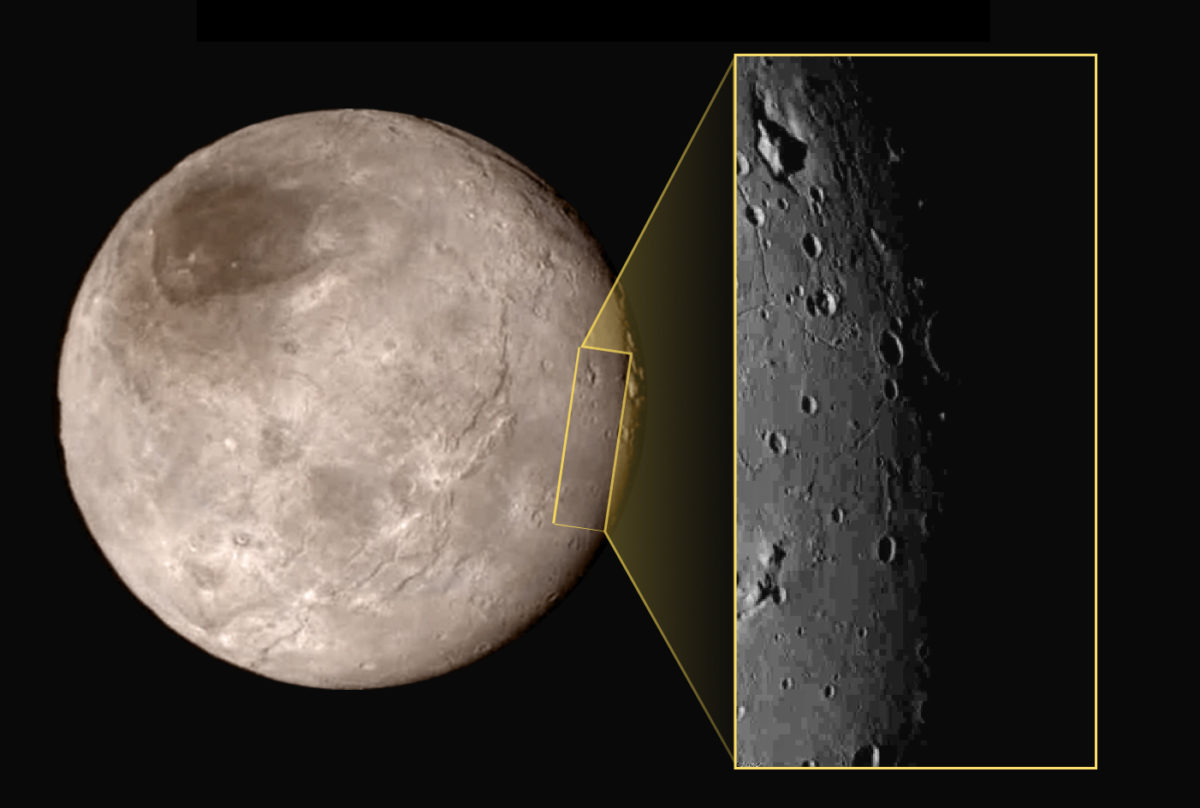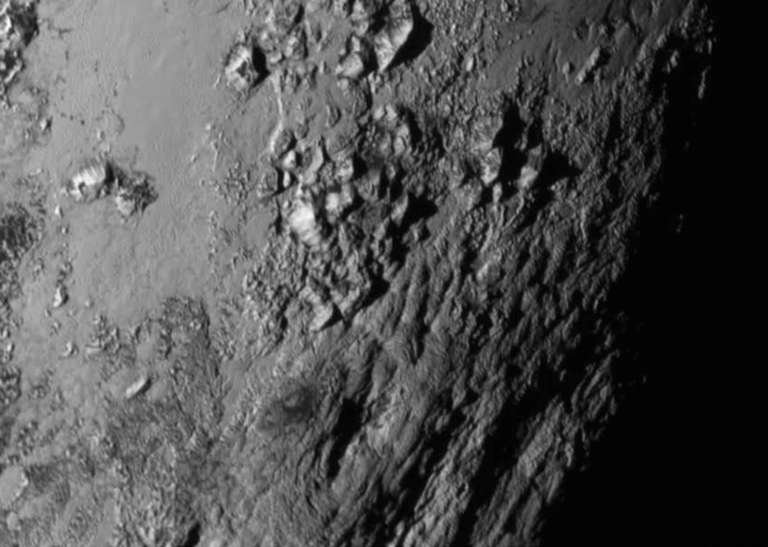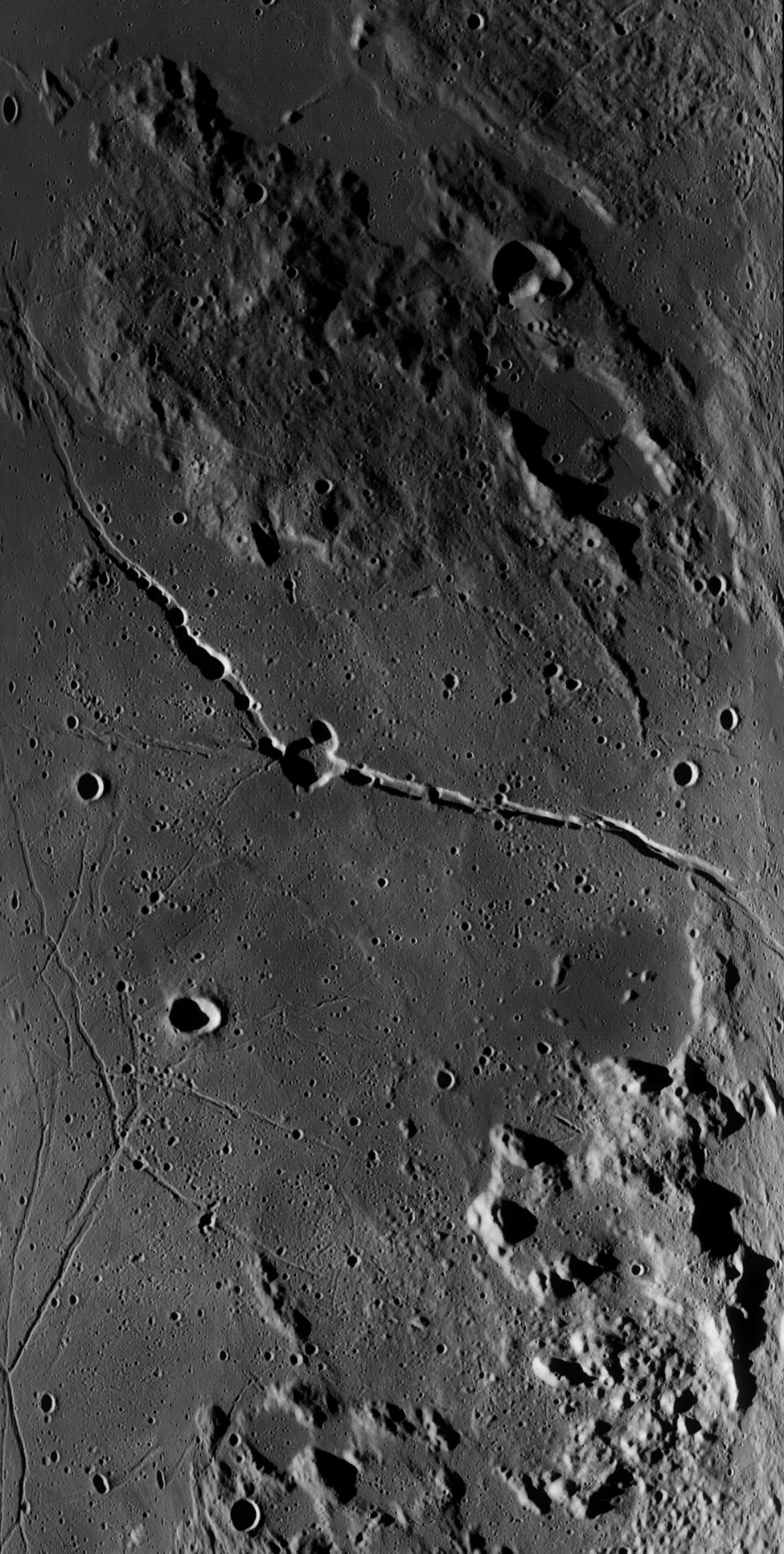Emily Lakdawalla • Jul 16, 2015
Latest New Horizons picture of Charon: oddly familiar
Today the New Horizons team released one more picture from Tuesday's encounter, one of three high-resolution images from a mosaic that crossed the center of Charon's disk:

The first thing that I notice when I examine this image is compression artifacts: a blocky texture to the otherwise smooth-looking areas. That is a result of the massive amount of compression they had to do to the images in order to squeeze them in to the short downlink time available right after the flyby. The original, high-quality data remains onboard the spacecraft and will be returned eventually, either this fall or sometime next year.
Look past the compression artifacts, and I see four major features in this photo:
- well-preserved impact craters (I don't see ejecta blankets, but there are distinct crater rims)
- very smooth terrain, except for those impact craters, and
- linear fissures in the smooth terrain, of unknown origin, at least one of which either cuts or is cut by a crater (the superposition relationship is unclear due to compression artifacts)
- that "mountain in a moat" at the top left
The geometry of this image is actually very similar to the geometry of the detail image of Pluto that they released yesterday. It is at the terminator (so the differences in brightness are shape-from-shading, not so much albedo) and it's from a pretty similar distance (77 or 79,000 kilometers), so the scale is the same. But what different landscapes! The mission really did get two completely distinct icy worlds for the price of one with this flyby.

This close-up image of a region near Pluto’s equator reveals a giant surprise: a range of youthful mountains rising as high as 3,500 meters above the surface of the icy body. The mountains likely formed no more than 100 million years ago—mere youngsters relative to the 4.56-billion-year age of the solar system—and may still be in the process of building, says Jeff Moore of New Horizons’ Geology, Geophysics and Imaging Team (GGI). That suggests this region, which covers less than one percent of Pluto’s surface, may still be geologically active today. Moore and his colleagues base the youthful age estimate on the lack of craters in this scene.
The image was taken about 1.5 hours before New Horizons closest approach to Pluto, when the craft was 77,000 kilometers from the surface of the planet. The image easily resolves structures smaller than a mile across.
Image: NASA / JHUAPL / SwRIAnyway, back to interpretation of the Charon image. I honestly don't know what to make of the "mountain in a moat" -- I'm with Jeff Moore, who's quoted in the related image release as saying "This is a feature that has geologists stunned and stumped." So I'm going to ignore that for now and focus on the fissures. I stared at the picture for a long time, trying to decide which icy moon they reminded me of, and I was drawing a blank. I realized I was thinking about the wrong worlds, and Andy Rivkin confirmed it on Twitter: they remind me of rilles in the lunar maria. A helpful Twitter follower suggested Rima Hyginus as a good analog, and it's not bad! Here's a Lunar Reconnaissance Orbiter photo of Rima Hyginus, a set of graben (extensional faults). It could be that we're looking at very similar landscapes: a flood of highly fluid lava solidified and then cooled, and as it cooled it shrank and fractured, forming graben. Except that on the moon, the lava was liquid rock; on Charon, it would have been liquid water.
Comparative planetology is fun! You never know where it is going to take you.

Support our core enterprises
Your support powers our mission to explore worlds, find life, and defend Earth. You make all the difference when you make a gift. Give today!
Donate

 Explore Worlds
Explore Worlds Find Life
Find Life Defend Earth
Defend Earth

